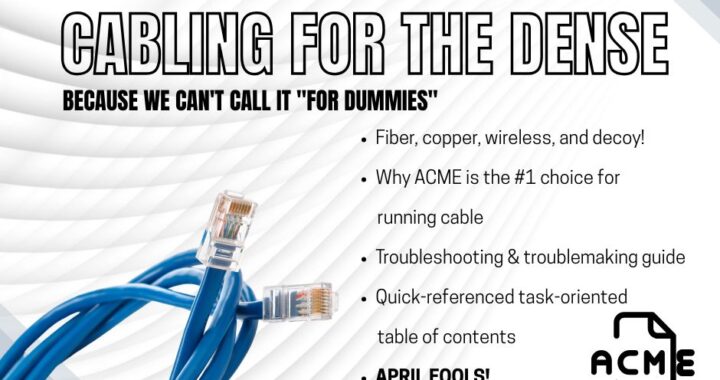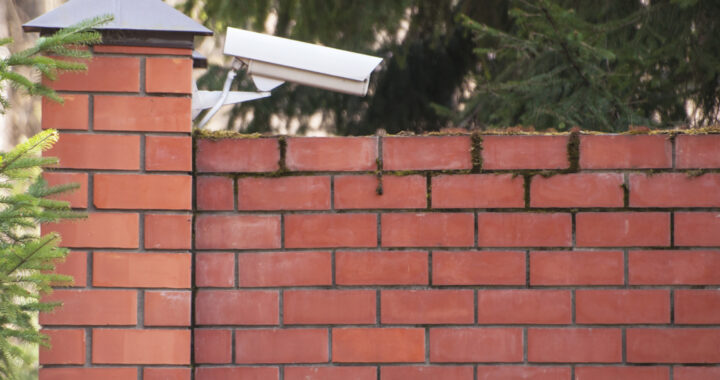In our decades of work at RCI, we’ve run cables for many jobs, in many buildings, and for many clients. For some, we were hired to run cables; for others, it was an incidental part of the job that was required to make the rest of our equipment work. And in many, we came across cables run by amateurs and other IT companies alike that didn’t meet our high cable run standards.
For a long time, we were perplexed as to why people ran cables so poorly, but recently, we came across a guidebook in Josh, one of our former technician’s files. The book was titled
How to Run Cable but appeared to be written only to confuse new technicians and prevent them from doing good work. We are unsure whether that was written by Josh or something he picked up along the way.
We’ve enclosed an excerpt of this guidebook to aid in your understanding of how so many cables came to be such a mess.
The following blog is satire. For examples of how one should actually run a cable, check our blog on the anatomy of an exemplary cable pull or call RCI to run cables.
Chapter One: The Fastest Way from Point A to Point B
While there are many forms of cable management that allow you to turn corners, why complicate things? We all learned in elementary school that the most efficient way to get from point A to point B is a straight line, not a turn or an angle!
So if you have a cable outlet in one corner of the room and a computer in the opposite corner, run the cable like you are dissecting a rectangle into two two triangles.
Chapter Two: What Trip Hazards?
If your cable box is on the floor, why take the trouble to run a cable up the wall only to run it back down again? That’s a waste of perfectly good cable! Simply run the cable along the floor and up the desk using as little line and slack as possible to conserve your wire.
If you’re worried about people tripping over it, think of it this way: people who don’t watch where they’re going aren’t valuable employees, so an injury now will save you years of wasted paychecks!
Chapter Three: You Con-duit
Should you use a conduit on the floor to hide the cable? Of course not. You’re not ashamed of it, are you?
Many IT companies choose to run cable through conduit. This is silly.
Conduit does not help the cable work better; therefore, it is wasted labor. Some will tell you that conduit protects your cable from fraying, but if it’s not fraying now, why would it fray later?
Besides, can’t conduit fray, too? Why waste your time?
Chapter Four: Service Loops Are for the Loopy
There is a common practice among cable installers to leave a useless loop of wire with every cable pull. There is no legitimate reason for doing so. Every inch of cable must be justified!
Some installers will argue that that is planning for the future in case you have to move something. Balderdash! We all know you can’t plan for the future. Besides, who knows if there will even be a future? And, if there is one, there may be a shortage of cable, and that could be your fault!
You don’t want to be blamed for ruining the future, do you? If so, you’re a terrible person.
Chapter Five: Removing Old Cable is Cruel
Old cable that is no longer in use should be left in place. Removing it takes time, and time is a precious commodity.
Also, consider this – what if people go back to using the old cable one day because they like it better? If you’ve removed it, they’ll have to track it down and put it back in. Why do that to someone?
Chapter Six: Splicing is Saving
Remember, if two cables already exist that together get you from point A to point B, running a new cable is self-indulgent at best. Simply tape the two cables together to form one, saving yourself time and the client money. It’s the right thing to do.
Likewise, if you have cable left over from several boxes, splice them together to create the length of cable you need!
Chapter Seven: Organization (Shrug Emoji)
If the customer has paid you to run cable, you should not waste time labeling it a patch panel. If that’s what they wanted, they’d have said so. Pull the cable and go home.
How Not to Run Cable
RCI would like to emphasize once more that everything above is terrible advice! While we have often encountered buildings that seem to have been cabled by people who read this guide, it’s not something we would ever recommend!
Instead, to run a cable, you should do basically the opposite of everything in this blog, or better yet call the professionals at RCI. And watch out for Josh!



